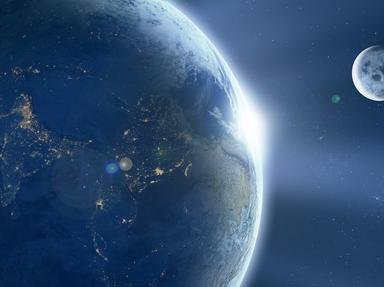Quiz Answer Key and Fun Facts
1. Let's be honest: the vast majority of Neptunian moons are quite lacking in diameter. One moon of Neptune makes the other thirteen moons look like mere pebbles, but which one?
2. In the past thirty years, eleven moons have been discovered to be orbiting Neptune - these discoveries usually take place in 'bursts', where multiple moons are discovered by the same discovery team. How many moons were discovered in 2002?
3. Which moon was discovered by Gerard Peter Kuiper, the namesake of the Kuiper Belt at the outskirts of the Solar System?
4. Neptune's moon system has the distinction of having the moon with the largest orbital period (the time it takes for the moon to complete a full orbit around its planet) in the Solar System. Which moon holds this honour?
5. Triton's orbit around Neptune is highly eccentric.
6. Thalassa is probably made up of fragments of the original satellites of Neptune.
7. Usually, there is a common trend in the origins of names of moons in specific lunar systems; for example, Uranus's moons get their names from characters of plays written by Shakespeare and Alexander Pope. Where exactly do Neptunian moons get their names from?
8. The Voyager 2 probe had a hand in the discovery of a few moons in 1989. How many moons did it discover?
9. The inner moons of Neptune are somewhat... attached to Neptune's rings, with some of them orbiting within or extremely close to Neptune's ring system. Which two inner moons orbit between the Galle and LeVerrier rings?
10. Proteus is a heavily cratered Neptunian moon. What is the name of its largest crater, which has a diameter of around 230-260 km?
Source: Author
RoryReloaded
This quiz was reviewed by FunTrivia editor
WesleyCrusher before going online.
Any errors found in FunTrivia content are routinely corrected through our feedback system.

